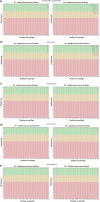The gill transcriptome of threatened European freshwater mussels
- PMID: 35963883
- PMCID: PMC9376081
- DOI: 10.1038/s41597-022-01613-x
The gill transcriptome of threatened European freshwater mussels
Abstract
Genomic tools applied to non-model organisms are critical to design successful conservation strategies of particularly threatened groups. Freshwater mussels of the Unionida order are among the most vulnerable taxa and yet almost no genetic resources are available. Here, we present the gill transcriptomes of five European freshwater mussels with high conservation concern: Margaritifera margaritifera, Unio crassus, Unio pictorum, Unio mancus and Unio delphinus. The final assemblies, with N50 values ranging from 1069-1895 bp and total BUSCO scores above 90% (Eukaryote and Metazoan databases), were structurally and functionally annotated, and made available. The transcriptomes here produced represent a valuable resource for future studies on these species' biology and ultimately guide their conservation.
© 2022. The Author(s).
Conflict of interest statement
The authors declare no competing interests.
Figures



References
-
- Allendorf FW, Hohenlohe PA, Luikart G. Genomics and the future of conservation genetics. Nature Reviews Genetics 2010 11:10. 2010;11:697–709. - PubMed
Publication types
MeSH terms
LinkOut - more resources
Full Text Sources

